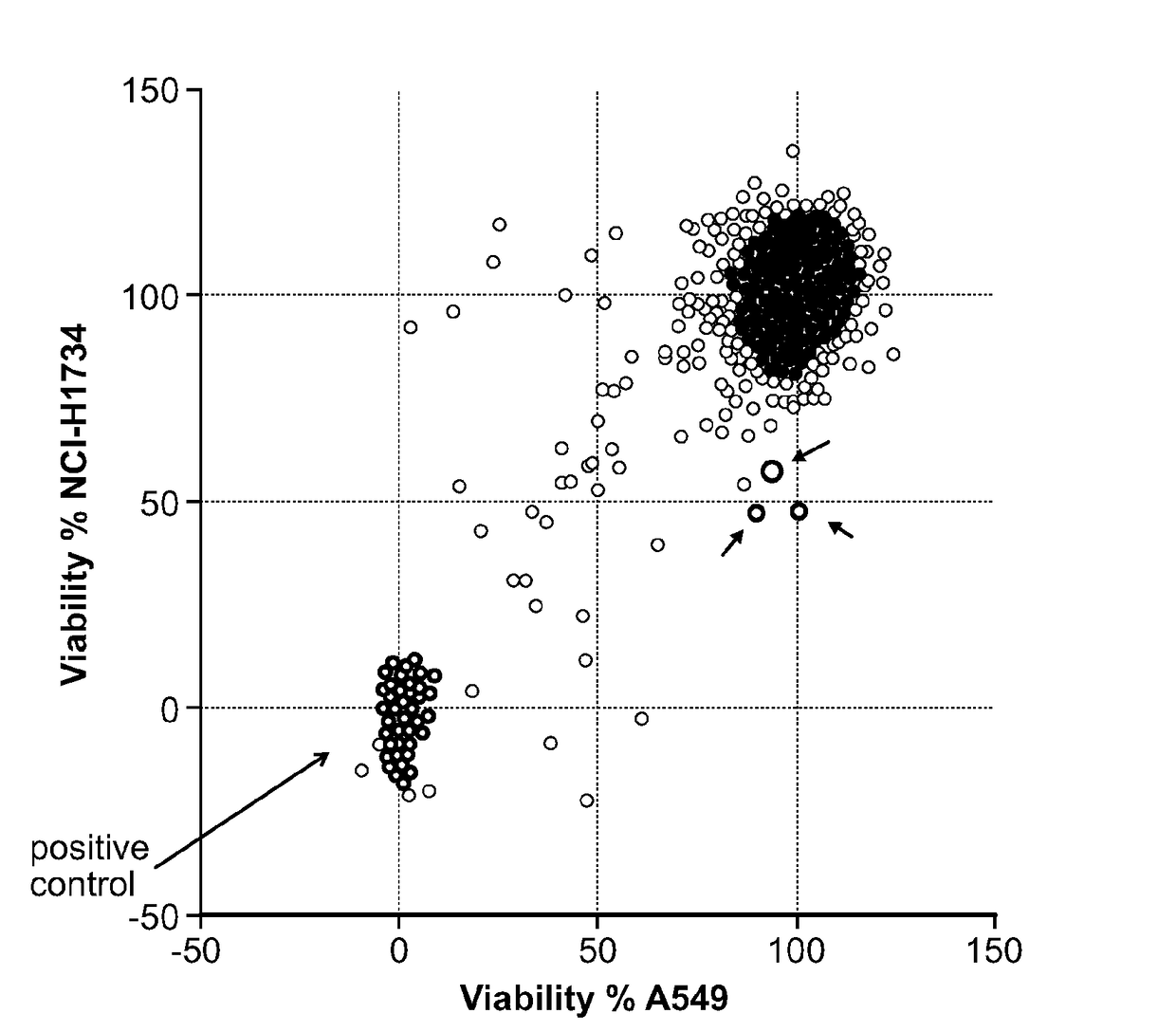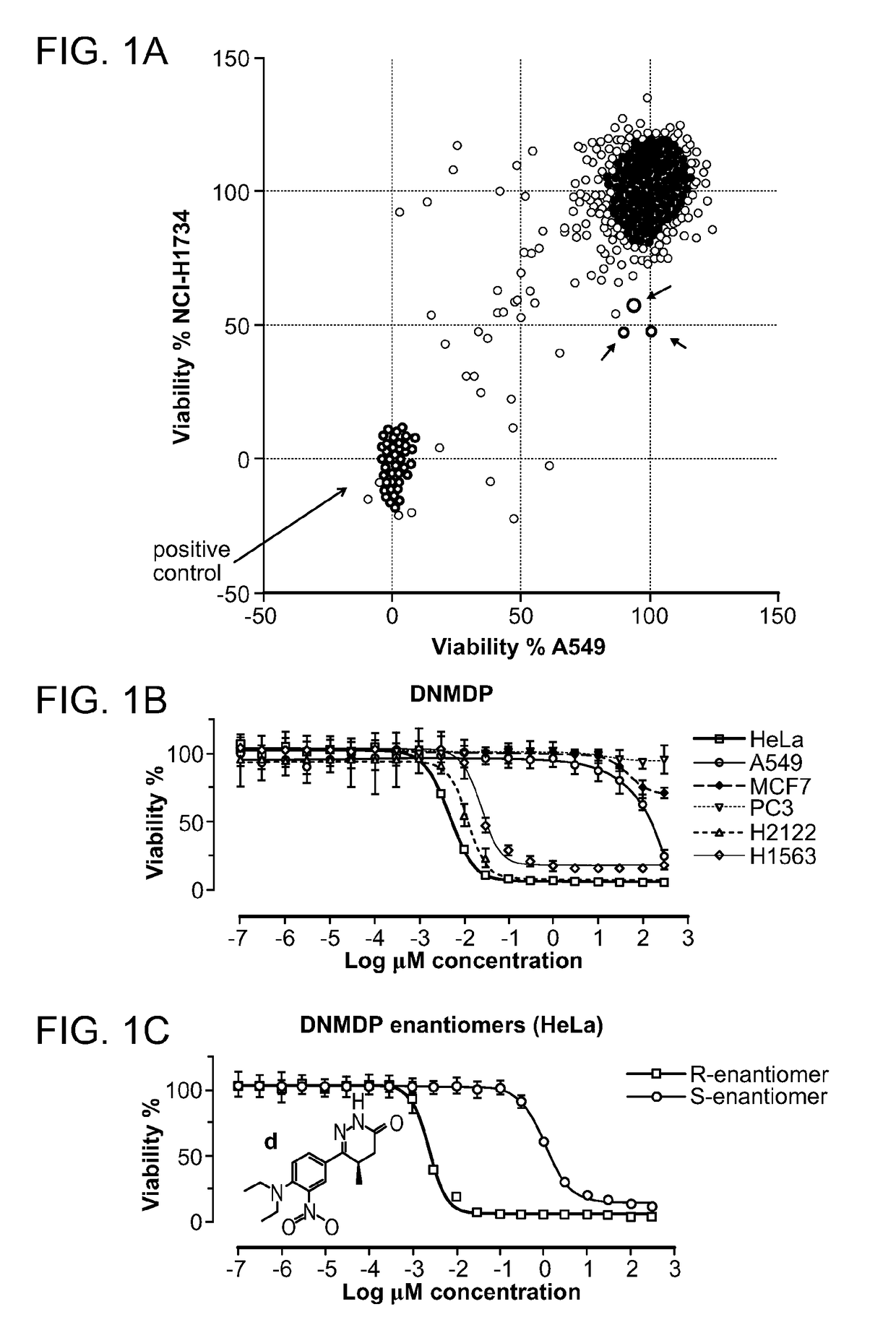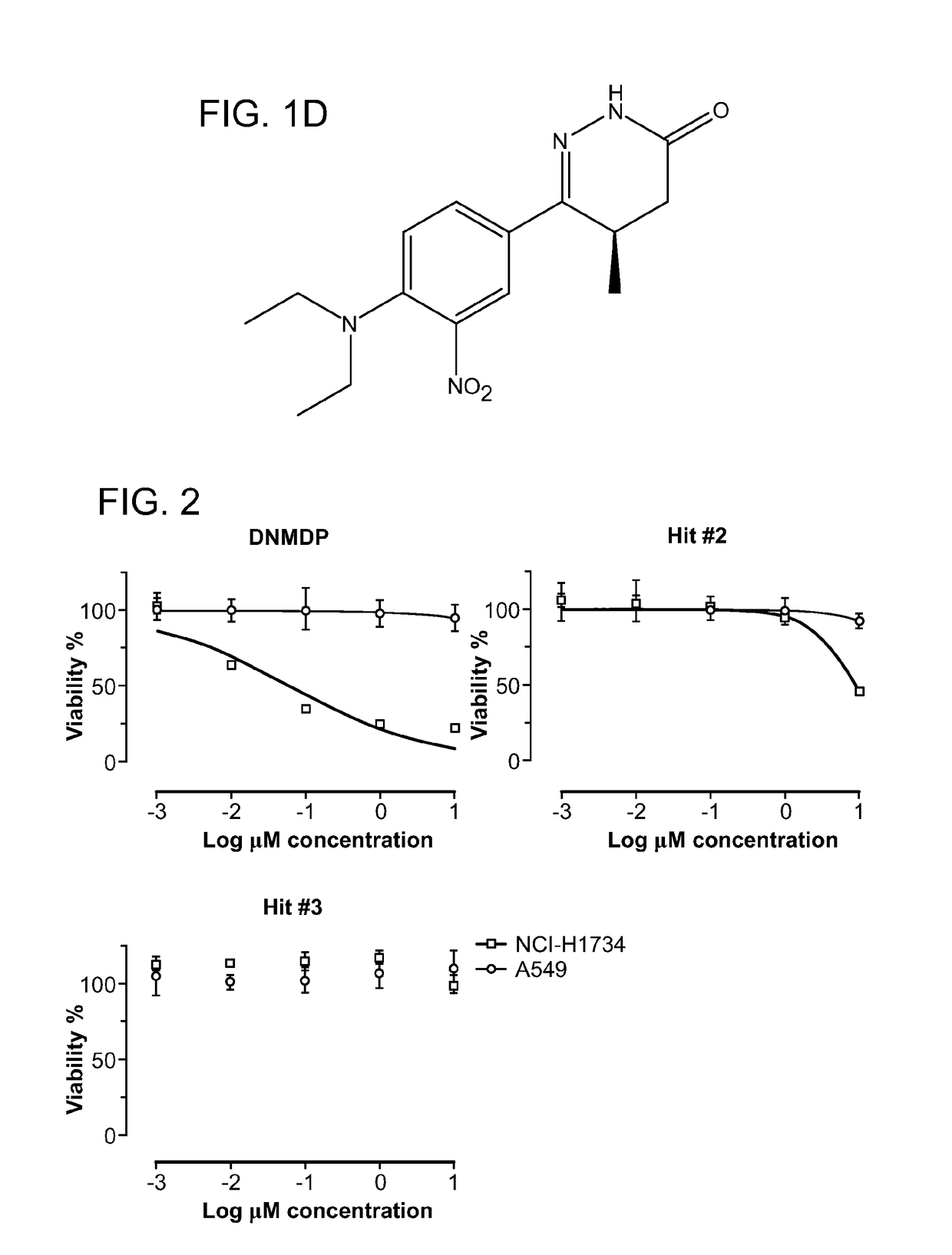Compositions and methods for cancer expressing pde3a or slfn12
- Summary
- Abstract
- Description
- Claims
- Application Information
AI Technical Summary
Benefits of technology
Problems solved by technology
Method used
Image
Examples
example 1
ation of a Cell-Selective Cytotoxic Small Molecule
[0123]To identify anti-cancer compounds with cell-selective cytotoxic activity, an unbiased chemical screen was performed in two lung adenocarcinoma cell lines, A549 and NCI-H1734, both of which harbor oncogenic KRAS mutations and truncating STK11 mutations, and which were TP53 wild type and mutant (R273L), respectively. 1,924 compounds were screened from the Molecular Libraries Small-Molecule Repository validation set in the A549 and NCI-H1734 cell lines at a single concentration of 10 μM in 384-well format in duplicate. As a proxy for cellular viability, ATP content was measured after 48 hours of compound treatment.
[0124]Three compounds showed a selective reduction in cell viability for the NCI-H1734 cell line compared to the A549 cell line, with an approximately 50% reduction in the NCI-H1734 cell line, which is >4 median absolute deviations from the median in the negative direction, compared to a minimal change of <1 median absol...
example 2
ation of PDE3A as a Putative Target of DNMDP
[0127]Given the potent cell-selective growth inhibition by 6-(4-(diethylamino)-3-nitrophenyl)-5-methyl-4,5-dihydropyridazin-3(2H)-one (DNMDP), its mechanism of action was examined in more detail. To determine the molecular target of DNMDP, chemogenomic analysis was performed of the 766 tested cell lines, previously characterized for mutations, copy number, and gene expression features as part of the Cancer Cell Line Encyclopedia (CCLE, Barretina et al., 2012), to look for correlation between these genomic features and DNMDP sensitivity. Analysis of Pearson correlations between DNMDP sensitivity and expression of individual genes across the cell line set showed a strong correlation with expression of the PDE3A gene, encoding phosphodiesterase 3A (FIG. 5A). The correlation between DNMDP sensitivity and PDE3A expression is not perfect (FIG. 18), and it is possible that some errors are introduced due to the high-throughput nature of the cell l...
example 3
lidation of PDE3A
[0130]The complex relationship between phosphodiesterase 3A (PDE3A) inhibition and cell killing, in which 6-(4-(diethylamino)-3-nitrophenyl)-5-methyl-4,5-dihydropyridazin-3(2H)-one (DNMDP) and some PDE3 inhibitors kill HeLa and other DNMDP-sensitive cells, whereas others PDE3 inhibitors do not affect cell viability, indicated several possible interpretations including: 1) the cytotoxic activity might be PDE3-independent and due to action on a different protein though screening 234 kinases found no kinase inhibition by 10 μM DNMDP; 2) cytotoxic and non-cytotoxic PDE3 inhibitors might bind to different sites within the protein and exert distinct activities; or 3) the cytotoxic and non-cytotoxic PDE3 inhibitors might bind to the PDE3 active sites but have different effects on the conformation and activity of the protein. This third possibility might be unexpected, but allosteric modulators of PDE4 have been shown to bind the PDE4 active site and interact with upstream ...
PUM
| Property | Measurement | Unit |
|---|---|---|
| Current | aaaaa | aaaaa |
| Temperature | aaaaa | aaaaa |
| Temperature | aaaaa | aaaaa |
Abstract
Description
Claims
Application Information
 Login to View More
Login to View More - R&D
- Intellectual Property
- Life Sciences
- Materials
- Tech Scout
- Unparalleled Data Quality
- Higher Quality Content
- 60% Fewer Hallucinations
Browse by: Latest US Patents, China's latest patents, Technical Efficacy Thesaurus, Application Domain, Technology Topic, Popular Technical Reports.
© 2025 PatSnap. All rights reserved.Legal|Privacy policy|Modern Slavery Act Transparency Statement|Sitemap|About US| Contact US: help@patsnap.com



